You Can Have Filo on the Low FODMAP Diet
Filo dough, made with wheat flour, has been given the Green Light by Monash University as low FODMAP in 1 sheet per serving. Now, those filo sheets are gossamer thin and you might be wondering what the heck you can make with them?
This savory Low FODMAP Spanakopita Spinach Pie is quick and easy and the layer of spinach and cheese under a cap of flaky, buttery pastry does NOT taste like diet food!
Sweet & Savory
This Low FODMAP Spanakopita Spinach Pie makes a great light dinner with a salad (vegetarian, BTW) or try it for lunch or brunch.
For a sweet take on filo, check out our Low FODMAP Walnut Baklava (it doesn’t get much sweeter than baklava!) and our classic Low FODMAP Apple Strudel.
Let’s Talk About Spinach
The Monash University app tells us that 75 grams (2.75 ounces) of spinach is low FODMAP.
This recipe calls for a total of 16-ounces or 445 grams of frozen spinach. Most of this is water weight. Please continue reading for more spinach info.
This recipe is based upon frozen spinach, as it is easy to find and economical. You might be wondering about its inclusion as frozen spinach has not been lab tested as of yet.
In discussions with Monash, our RDs and others with clinical experience, frozen fruits and vegetables are considered most akin to fresh (as opposed to other types of processing and in terms of FODMAP levels) and we are comfortable recommending them.
As for the weight of the spinach called for, what you begin with is not what you end up with. You start with 16-ounces (455 g) of spinach, but, it is largely water weight. Once defrosted, drained and literally squeezed dry, you are left with far, far less weight and the amount is within low FODMAP recommendations.
Of course, your tolerance is always what is most important! If you know that spinach is problematic for you, then a recipe focused upon it is not the best choice. On the other hand, if you know you digest it well, it is a fabulous recipe to try.
Squeeze That Spinach Dry!
To make this recipe convenient, I suggest starting with frozen, defrosted spinach. The only trick is to squeeze it dry. REALY dry.
REALLY DRY.
I usually start by placing it in a colander and pressing as hard as possible with the back of a sturdy spoon. Then I dump it into several layers of paper towels, or a clean tea towel, and literally wring it dry over the sink. It is amazing how much water comes out!
This is not a hard technique – it just takes time and you get your hands wet! But do not skip it; you need a fairly dry filling so that the filo has the opportunity to crisp up well in the oven.
That’s what is so great about filo! It’s light, crunchy, crispy layers! So help it along.
Use a sharp knife to cut your wedges!
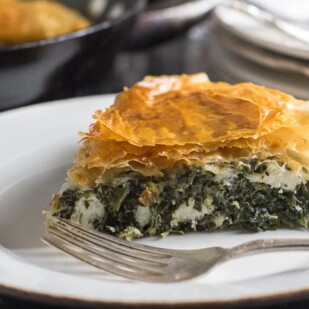
Low FODMAP Spanakopita Spinach Pie
One-sixth of our Low FODMAP Spanakopita Spinach Pie is low FODMAP and great as a light dinner or lunch.
Low FODMAP Serving Size Info: Makes 1, 10-inch (25 cm) pie; 6 wedges; serving size is 1 wedge
Ingredients:
- 3 tablespoons unsalted butter
- 1/2 cup (32 g) finely chopped scallions, green parts only
- 3 large eggs, at room temperature
- 1 cup (160 g) lactose-free cottage cheese (see Tips)
- 2 ounces (55 g) feta cheese, crumbled
- 1 tablespoon dried dill
- Kosher salt
- Freshly ground black pepper
- 16- ounces (455 g) frozen spinach, defrosted, drained and squeezed dry
- 5 sheets of filo
Preparation:
-
Position rack in middle of oven. Preheat oven to 350°F/180°C.
-
Heat the butter in a 10-inch (25 cm) skillet, preferably nonstick, and melt over medium heat. Pour out and set aside 2 tablespoons of the butter to use with the filo.
-
Add scallions to pan and remaining butter and sauté for a minute or two until softened. Remove from heat. Meanwhile whisk together the eggs, cottage cheese, feta and dill in a mixing bowl until blended. Season well with salt and pepper, then stir in the well-drained and dry spinach. Scrape this mixture into the pan and stir it together with sautéed scallions. Smooth into an even layer.
-
Lay one sheet of filo over the spinach filling, tucking in the edges as needed. Brush with reserved melted butter. Lay another sheet on top, crosswise to the first one. Brush with butter and tuck as you did the first one and continue, using all of the filo and butter, ending with a nice layer of butter brushed on the very top.
-
Bake for about 30 to 40 minutes or until golden brown and crispy. Allow to cool for at least 5 minutes. Use a serrated knife to cut into wedges (taking care with your pan as you reach the bottom). The wedges come out very neatly, if you have squeezed your spinach dry! Serve immediately.
Notes:
Tips
- Monash University has stated that regular creamed cottage cheese is low FODMAP in amounts of 40g/2 Australian tablespoons per serving, but as we are trying to have a nice wedge of this pie, and there is the addition of feta cheese, we prefer to use lactose-free cottage cheese.
Nutrition
All nutritional information is based on third-party calculations and should be considered estimates. Actual nutritional content will vary with brands used, measuring methods, portion sizes and more. For a more detailed explanation, please read our article Understanding The Nutrition Panel Within Our Recipes.
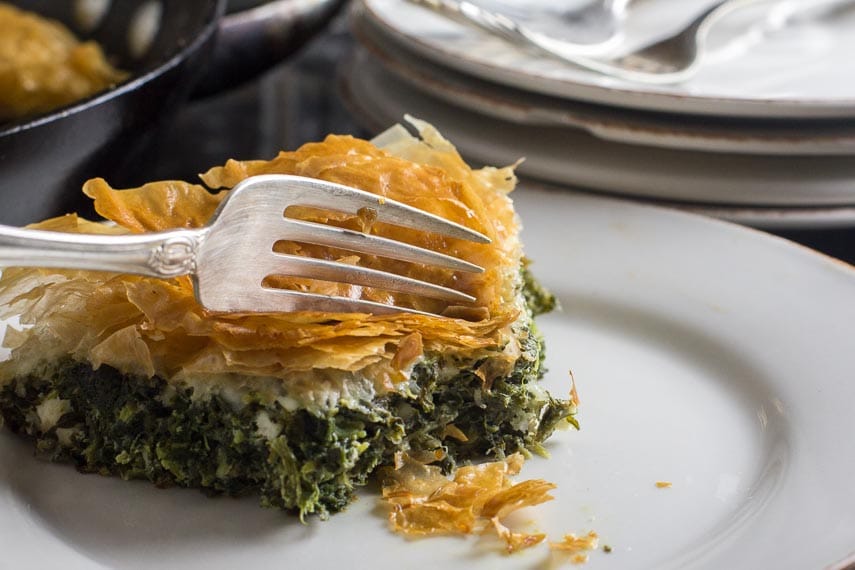
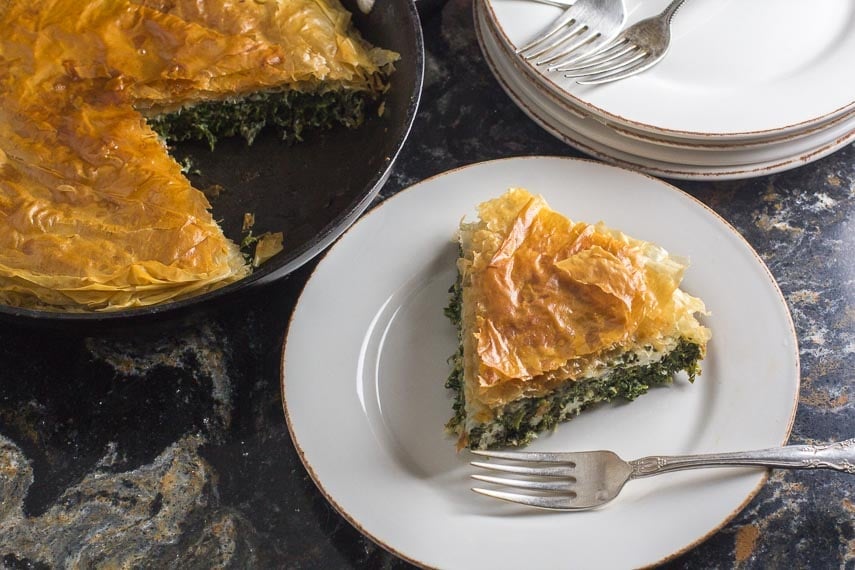
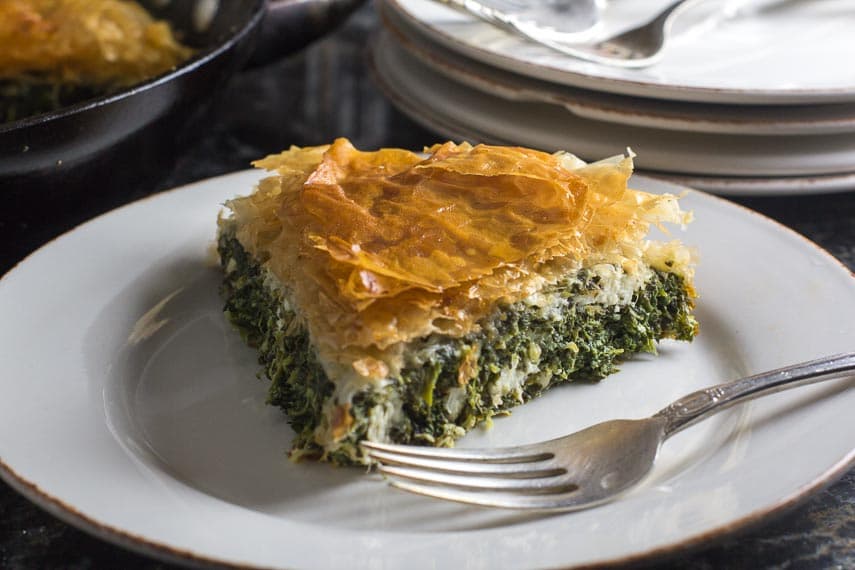
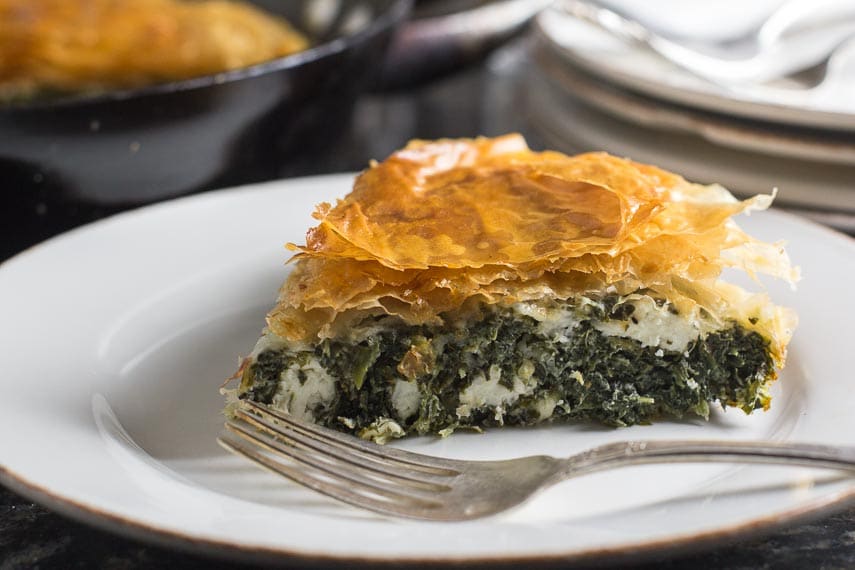
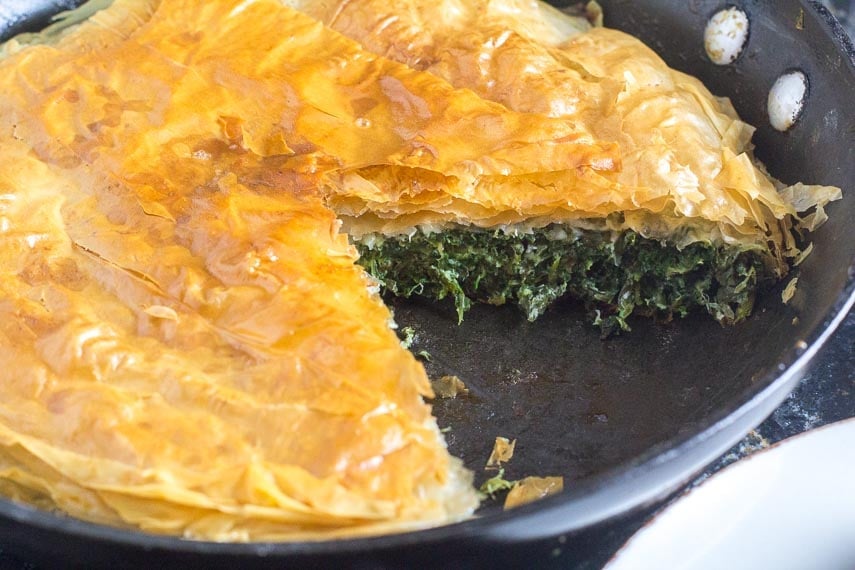
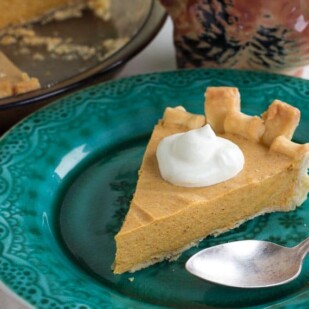
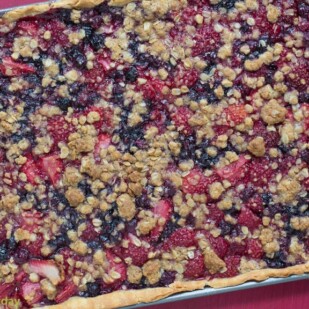






so grateful for this website
thanks to my dr,my granddaughter who is a new RDN..i found FODMAP…an end to IBSD!!!! if I sway away from diet very much at all…trluble ….Thanks!!!
Susan, so happy that we can be of help and part of your low FODMAP journey – and healing!
I’m confused – you clearly stated that
The Monash University app tells us that 75 grams (2.75 ounces) of spinach is low FODMAP. But your recommended serving size would equal 114 grams (2.67 ounces)
I cannot find anywhere that states that frozen spinach is made from English spinach to allow larger serving sizes.
What am I missing? Please explain.
You are not missing anything in regard to what is on the app. In discussions with Monash, our RDs and others with clinical experience, frozen fruits and vegetables are considered most akin to fresh (as opposed to other types of processing and in terms of FODMAP levels) and we are comfortable recommending them. As for weight, what you begin with is not what you end up with. You start with 16-ounces of spinach, which is largely water weight. Once defrosted, drained and literally squeezed dry, you are left with far, far less weight and the amount is within low FODMAP recommendations. That said, you have brought up a great point and I am, going to edit the recipe to explain this. Thank you for pointing it out. Also, your tolerance is always what is most important! If you know that spinach is problematic for you, then a recipe focused upon it is not the best choice. On the other hand, if you know you digest it well, it is a fabulous recipe to try.
I am excited to try this recipe, especially since it only uses 3 tbsp of butter compared to some other recipes using Phyllo dough.
Would it be possible to replace the frozen spinach with fresh?
TIA
You could try but how much spinach to use is the question. I would go by weight, cook it down and give it a go.